Right, here it is.
Caring for duprasi – or doops – isn’t too difficult. Once you know the essentials, you will find that they make great pets. They are easy to handle, friendly, easy to feed and have no really specialist needs.
If you have had Syrian hamsters or Mongolian gerbils before, you won’t find anything too different (except maybe in housing) and if you have had other exotic mammals like spiny mice, pygmy possoms or sugar gliders, this will be simple.
Duprasi are very active at night and have really strong characters when they are awake – don’t be fooled by a sleepy-looking doop! If you only see them during the day – you want to sit up late one night and watch the action!
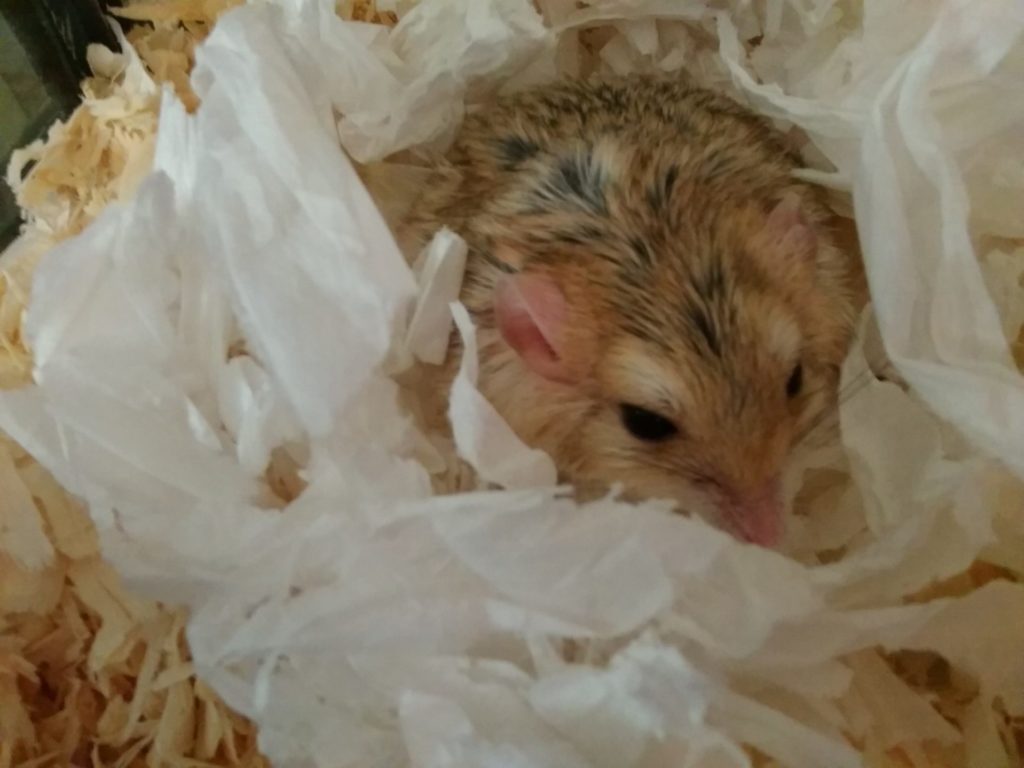
What Are Doops Like As Pets?
Doops are like a really cute-looking comedy mouse. They have large ears, a pointy little face and giant eyes.
They are really calm and relaxed pets as adults, and are often depicted asleep on their backs or flattened out in someone’s hand like a cute pancake with a face.
Oh, and they have a really cute fat worm of a tail – with tiny ginger hairs all over it.
They are very nocturnal in the sense that you sometimes can’t wake them up during the day at all – even when tempted with a tasty mealworm – however at night they become a different creature. They can move all the bedding from one side of the tank to the other overnight if they want – they can bury everything you have in their enclosure quite quickly too.
They don’t seem to like burrowing as excessively as ordinary gerbils, but they LOVE digging for the fun of it.
They are incredibly climby too and will hang upside-down from bars and ledges given the chance – but at the same time are incredibly clumsy. They can’t jump very high and tend to use other things to help them achieve any sort of height.
And they fall over a lot.
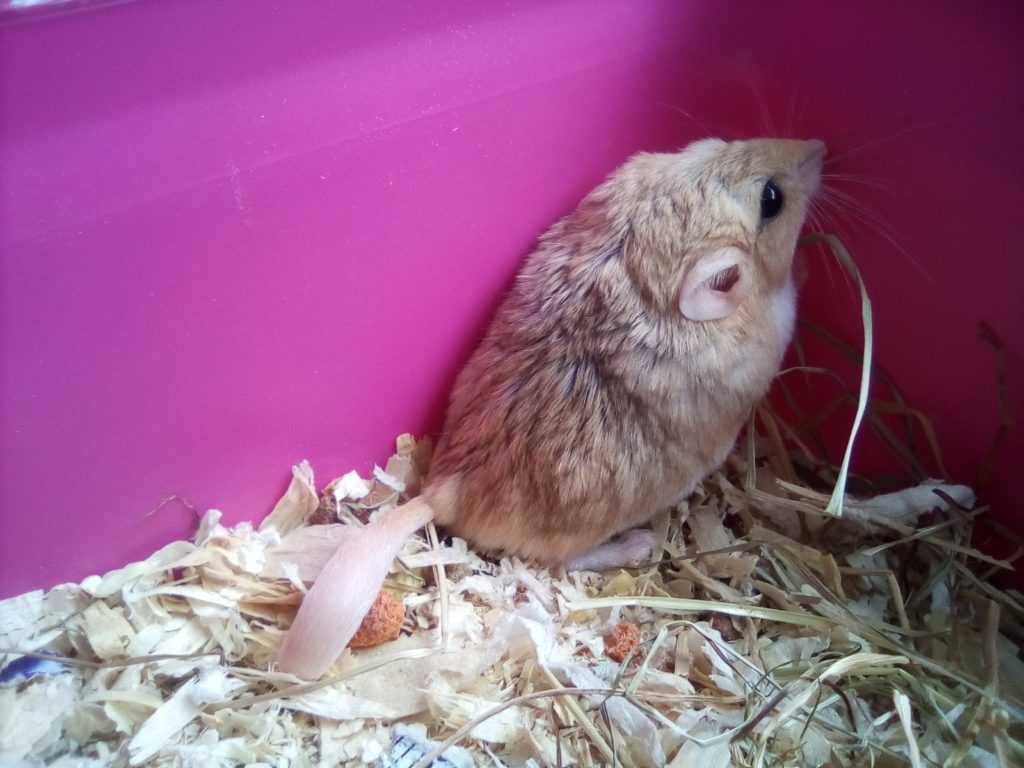
They don’t tend to be bitey in general, but their defence mechanism is to stand up like a (tiny) bear – or lunge out from under something – and hit you with their front feet. Which we must admit is still one of the cutest things we have ever seen.
It is almost like they are smacking you away – sometimes they even run off turning round every so often to smack you again.
They can sometimes squeak a bit too – sometimes while they are still under a tunnel or in their house, or when you pick them up during the day. We are starting to wonder if over handling during daylight hours causes this or not?
Keeping Duprasi As Pets:
Doops are most commonly kept in singles. That isn’t to say they can’t be kept in pairs or groups though, it just isn’t the best long term option based on people’s experiences to date (article updated December 2020). They seem quite contect to live alone too – so that helps.
They can be kept in pairs or groups for an unknown (as yet) amount of time – but you will be on amber alert the whole time, just like with Mongolians and dwarf hamsters. However, we have had doops obviously not getting on within weeks – mainly because they don’t seem to like sharing things.
As far as we have researched so far (up to end of 2020), there is no ‘safe’ group of doops. Anything over and above 1 could fight at any time, although pairs of related siblings or a parent-offspring seem to work well for longer. You can often see squabbling before pups are even mature so they certainly need single homes – and we certainly won’t home any that really squabble before they are sold to live as a pair.
We currently have no stats on whether this declanning is related to enclosure size and type, or down to the individuals and their hormones – so we are erring on the side of caution. We keep all our critters in the same environment and enclosure type – so this is leaning towards personality for sure, but if the percentages get higher, then perhaps we will revisit enclosures. We are also running some experiments ourselves to see what groups look like and what they do?
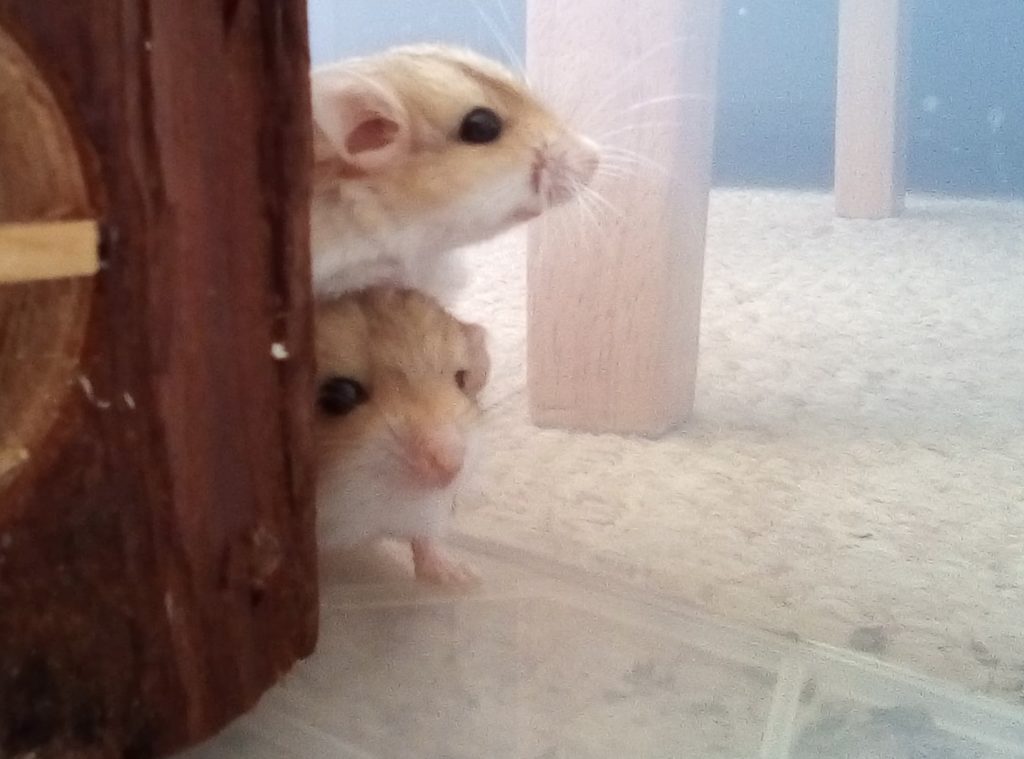
They seem really quite happy on their own too – so there is no real problem leaving them as such. As long as they have plenty of fun and different/changing enrichment in their enclosure – including plenty of bedding to move around from one side to the other – then they will be fine on their own.
They must have a wheel though – all doops need a wheel for sure. No compromise.
Duprasi are fully weaned from their mum at about 4 weeks – but ideally they shouldn’t be homed out alone until they are at least 6 weeks (and above a certain weight in our case). Taking them too early means they might not have learned all their skills off their mum on how to be a grown up doop and so they may be more wary of a lot of things to start with. However, if the mum seems overwhelmed we will take out groups of pups together a bit younger to give her some head space.
What’s The Best Duprasi Cage?
Well, as you would expect, the best cage for a duprasi is actually a tank-type enclosure. Most desert dwelling rodents aren’t used to bars and climbing, and can really suffer because of it with broken legs and tails.
Falls, breaks, scratches, sores, bald patches and broken teeth are all the results of cage bars – as well as sleepless nights for the owners. Cages + small mammals in our book = not so good.
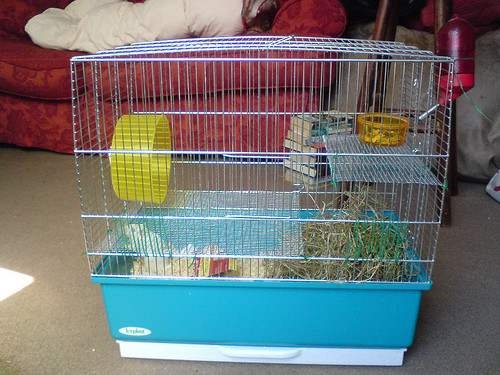
Get yourself a lovely tank, RUB (Really Useful Box) or viv (reptile vivarium) – wider and longer than it is tall. Duprasi are not built for their climbing down and woefully-lack leaping skills – they are diggers and scufflers (although they can scale a vertical wooden slope like a squirrel). Therefore, don’t be suprised if they fall from ledges and ladders or damage their tiny legs in uncovered barred shelves – they aren’t the most agile of creatures that’s for sure.
Some people have had duprasi in gerbilarium-type set ups, but they do cover the bars and keep the ladders at really shallow angles – rather than super steep. Anything too steep or too high is not fair on them long term from what we currently know and could affect their behavior.
Quite a few doops we know have had accidents too, resulting in a few emergency surgeries with bars, things in eyes and getting their legs caught in things.
General substrates like (soft, curved) wood shavings and paper or card-based bedding are fine – but they will make them dusty as they are always digging at them, so keep an eye on that.
Some people have kept them on a sandy, more gravel-like substrate (similar to their natural habitat) but too much sand can (apparently) irritate their noses and make them quite sore – so people often split the substrates – say with a giant cat litter tray of the sand in a nest of softer substrate.
Try the substrate at varying levels – but they tend to move it about a lot themselves, so don’t be too precious about how the set up looks on a day to day basis. They are much more hamster on that than gerbils (who can upturn the entire tank overnight).
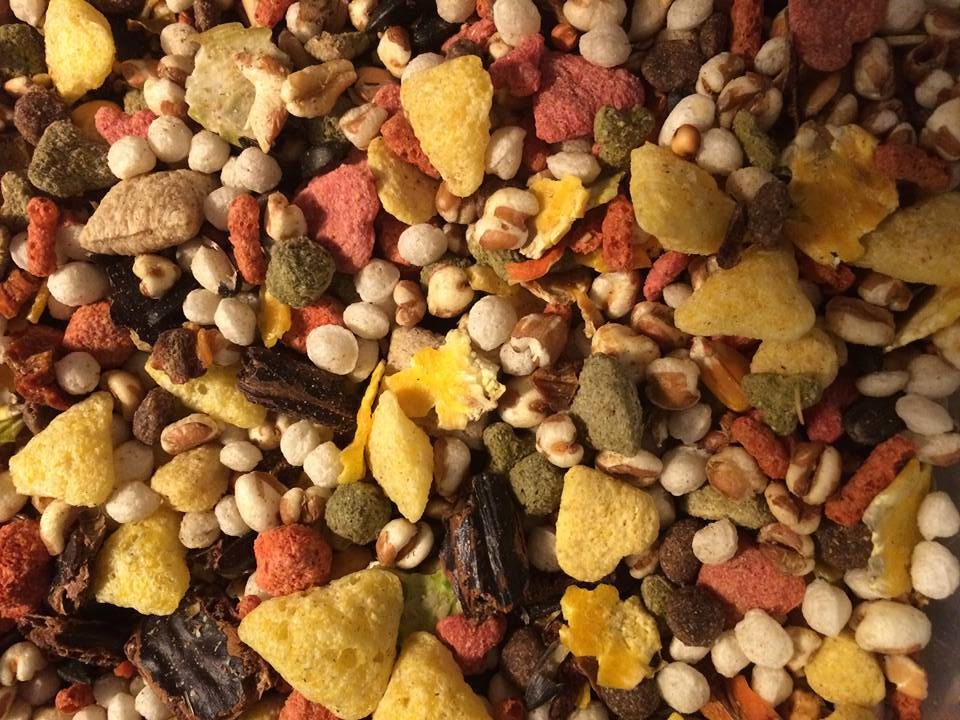
The Best Food For Duprasi:
As you would imagine doops have a very gerbil-like/hamster-like diet – which is very handy as there are already loads of really good ones on the market.
Doops do appreciate a more meaty diet, but this doesn’t have to be in the staple food – so buying Versale Laga Gerbil Nature or Harry Hamster will be a good base – but then so would any other small rodent food – including many rat and mouse foods.
So far there haven’t been any major studies in what is best to feed a duprasi, so basing it on what your breeder or pet store is feeding them would be a great start. Seems that between 5-10g of mix a day is eaten, although if you give too much food – they will avidly feed selectively. Watch out for what pieces are always left behind on cleaning them out – and if it it always something that is common in the food already – then perhaps you need to switch to another food. Not only are you wasting money – but they aren’t getting the full nutrition from that food anyway, are they?
If you are going for a standard food then you will be best to add some extra meat protein – either in the form of a dried cat, ferret or hedgehog food – or with live or dried insects (including mealworms, waxworms, locusts and shrimp cakes). Most adult doops love their food live – but if as an owner you don’t – then it isn’t really a problem.
Also, doops just love fresh food – broccoli and kale being the favorites for my clan at the moment. Just a little bit each and they love it – it even wakes them up during the day sometimes – just the smell of that fresh greenery!
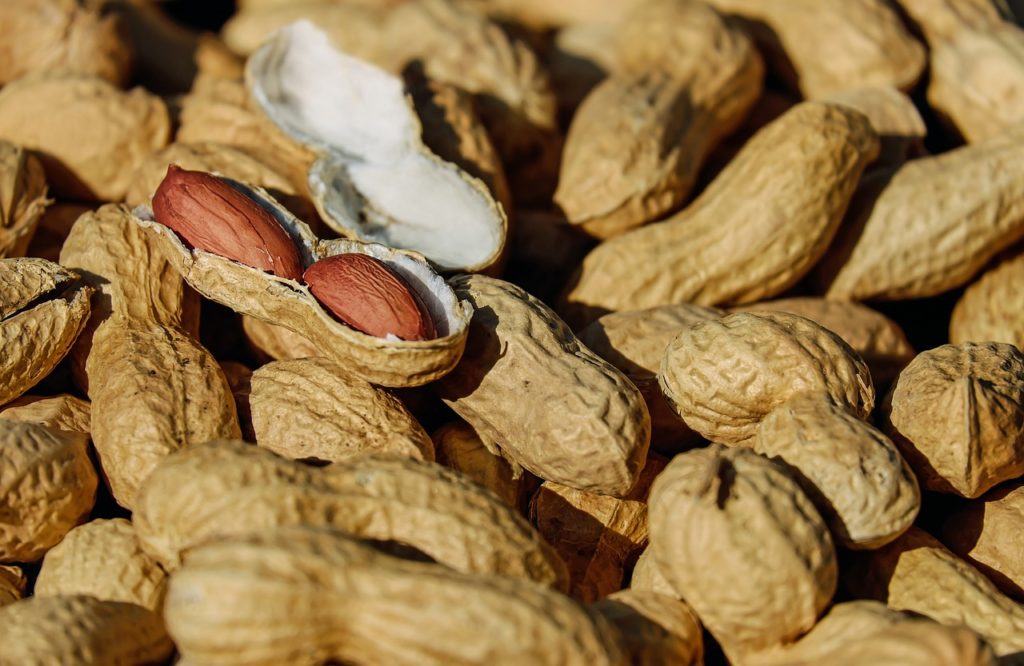
Other things that ours love include carrot, sweetcorn, baby sweetcorn, cucumber and cauliflower. We also feed dried flowers, berries and seeds in bits and bobs – which we are sure they appreciate.
Treats-wise – they seem to destroy any nibble bars leaving just the stick from the middle – leaving the pieces all over the place – so we just stick to normal food including the odd roasted monkey nuts in shells.
Any Health Issues With Duprasi?
So far – thank goodness – there aren’t any known dominating health issues dogging the doop fancy.
Of course doops do get ill, but there isn’t a big trend to make note of – like wet-tail in Syrian hamsters or scent gland tumours in Mongolian gerbils.
There do tend to be a few eye-related queries about doops – which people think is either ‘cherry eye’ or ‘fatty eye’ – but which are often related to an as yet hidden ‘other’ health issue – so keep a watch on them more closely for the next week or so just in case.
There have been a few teeth queries too – like with all rodents – always check their teeth as a first step for ANY health issues anyway. Other comments have been more specific like kidney failure, cysts and reproductive issues.
If anything, the only way you can tell there might be something wrong is if their tail loses weight – i.e: it gets all thin and damaged-looking or they lose weight overall. Always assume there is a problem with the teeth first – so get them checked asap.
However, quite often there are no signs of a poorly doop until it is too late.
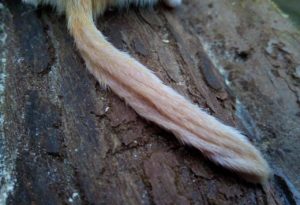
Other things to check are whether anything new has been done in their set-up or in the room they are in, and work back from there incase it is poorly-stored food, a new chemical in the air, you recently moved the tank or changed to a new batch of bedding etc. or anything you can identify that has changed, no matter how insignificant it seems to you as a human.
Small animals are much more sensitive to things like very low or very high frequency noises or strength of sunlight or lack of sunlight, than we are. They also react to chemicals in the air and ultra-sonic sound much more strongly than we sometimes expect them to.
However, in general, duprasi tend to look after themselves – as do most small rodents – and they generally prefer a drier warmer environment than a damper or more cold set up – so no moist substrates or draughts for these little guys and a well ventilated enclosure (no condensation allowed ever).
As with all animals – don’t let them get too hot either – so out of direct sunlight is a must – especially if they are in a tank without a topper.
You can offer a chilled ceramic tile if you think they might be too warm, or a heat mat under one corner of the tank if you think they might be too cold – but generally in the home, they are within the right temperature.
If you are fine – so will they be.
Other Common Duprasi Behaviours:
In addition to the above, we have noticed a few things about doop behaviour that you might want to accomodate for with your little ones.
For example, they love to be in, behind or under things, so we have moved everything in their enclosure out from the sides of the tank. Where normally you push up the house and things into corners and up against sides, duprasi tend to prefer the opposite. So we have everything the width of a doop out from the sides, so they can run behind everything if they want to. This also increase the distances they can run if they want as they can then run a lap of the enclosure in full.
They LOVE a wheel. We use the Trixie 8.5 inch (20cm) wheel with my doops as this has little sections that are covered on the open side – and we think the doops like that as they can ‘hide’ in there. We think it makes them feel a little bit more secure and safe.
The action of it spinning these sends all the wee and poo out into the join between the front and wheel panel, so cleaning this regularly is advised and also removes all that waste from the enclosure – reducing cleaning frequency.
We have also used the Silent Spinners, but just stuck with the Trixie ones in general. Why change when they love it already?
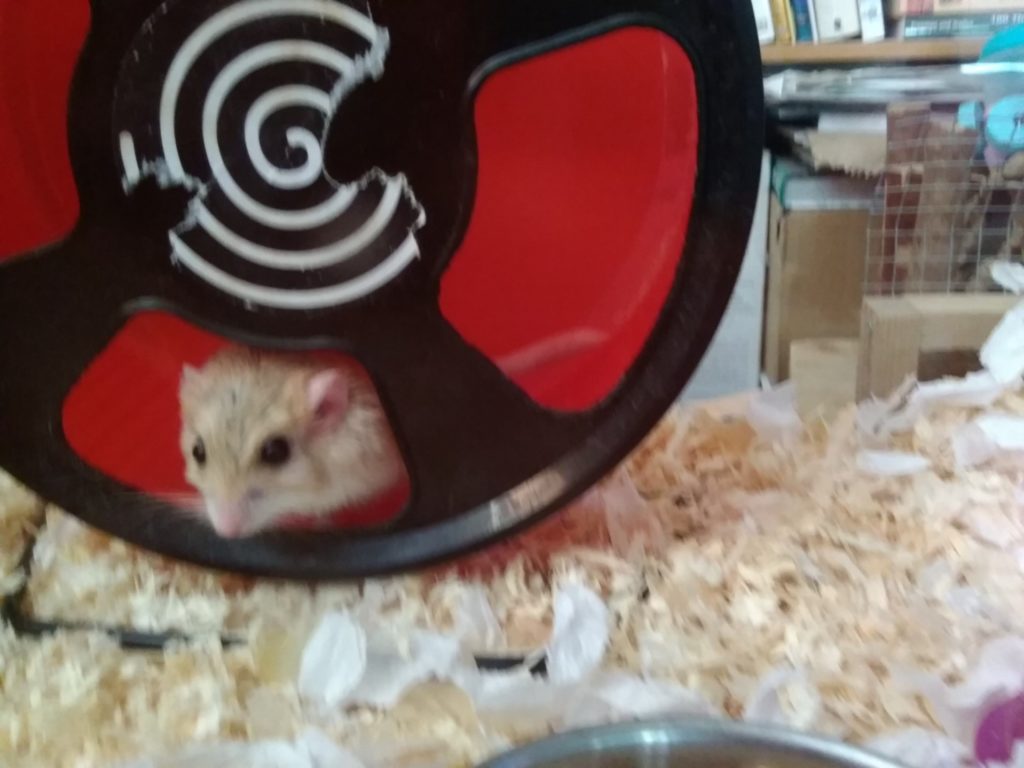
They also like to sometimes sit up on a ledge, but as they can’t jump very well, we make sure they have little ramps up on top of things. That way they can get out of the substrate if they want as well as having a good perch to ‘meerkat’ themselves on for a few hours. If this surface is also smooth they will most likely use a toilet – which is perfect for spot cleaning). A great spot to hand feed them a meal worm too…
They love making a big nest – even if it seems too warm – they cram their houses full of bedding. We use the paper strips or torn kitchen roll – never the thread-like or cotton ones (too many horror stories about amutated toes and feet) and they drag it into their house or favourite tunnel – and snuggle. Alway offer your doop or doops a spare house or jar so they have options for different temperatures (like us on the sofa or under the duvet!)
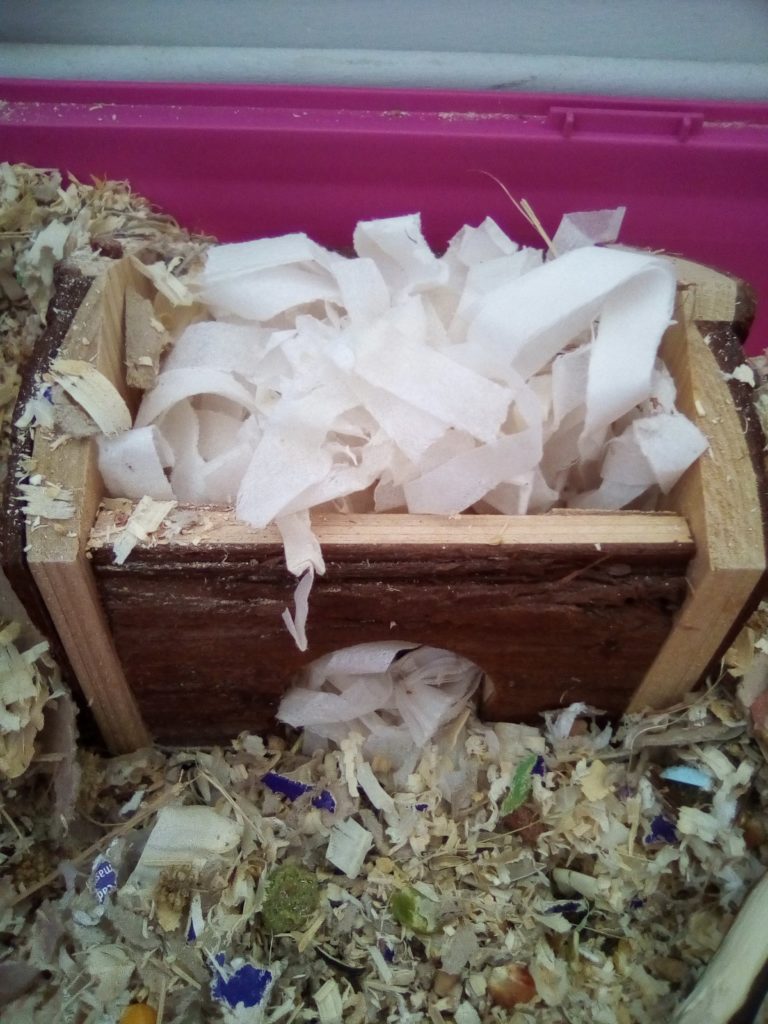
And they love a shallow sand bath – particularly in warm weather.
We often find ours just laying out in the dish. It also smartens up their coat as some duprasi can look rather discheveled or even greasy-looking without their weekly sand bath. Best not to leave the sand in too long (not that it doesn’t get filled with bedding anyway) as this can cause sore noses in some doops apparently. We have stuck to the weekly offering for a few days at a time and haven’t had any trouble yet.
Some people also say that giving your doop hay in a big jar or giant tube can also improve the coat as it rubs up against the hay it absorbs the grease. However, some doops are just more greasy-looking in general and it is likely that no matter how many sandbaths of hay rubs they get – they stay greasy-looking?
We think doops come in three coat settings: Super Smooth and Flooffy; Smooth with the odd bad hair day; or greasy-looking most of the time. And we are keeping closer records now on our doop coats to see if this is something that runs in family or just changes whenever?
Anyway – We hope this is enough to get you started with your doop hunt, and so you can stock up on the essentials before you get your new duprasi.
Any questions just ask.
Hi I’ve been researching getting a duprasi for awhile now and we are trying to find a breeder at the moment. Do you know any good breeders in Essex? Your page is really helpful. Thank you.
Thanks Claire – there is quite a lot of good info on there from keeping them myself. I really should add more now that I have learnt even more about them…
There is a breeder in north Kent who I am trying to get in contact with – otherwise I have a popular breeder from the east midlands who drives down through Dartford on a regular basis who might be able to help out – I will get them to email you.
Happy hunting,
RodentZone
It’s lovely reading these Doop Diaries 🙂 There’s lots I recognise, like them loving a big nest, loving their wheel (even using it as their safe space, hiding behind the plastic spokes on the Trixie!), often finding them sat in their sand bath, the cuddles … oh, the cuddles. There’s lots that also sounds completely alien to me, further cementing our conclusion that Shroomi is a bit of an oddity (she fits in well here at the horde). She certainly wasn’t tame when we bought her and was bitey, she’s still quite timid and hard to catch sometimes, although friendly and cuddly and has never done a lot of the things you describe. I don’t think I’ve heard a single sound from her in over a year since we’ve had her and the only time I’ve ever seen her try to bat something with her front paws is when she’s bitten me, so that’s not something we think of as “cute”, so much, but more of a “bog off or imma kill you, human” response 😉 She’s also never been seen climbing her cage top, either. She was in the Savic Habitat XL, a 70 X 37 X 52cm gerbilarium, for the first 9 months, before inheriting the enormous Savic Plaza, a 100 x 50x 50 home, ostensibly a rat enclosure but with a 9mm bar-gap and still with a 15cm bottom for deep bedding and digging (we have 4 happy (and MESSY!) gerbils in one of these at the mo, too). As such, she’s always lived a pretty vertical life and we change all of the horde’s homes every time we clean them. I love to build custom ledges and climbing frames as a hobby, so all of our cages are very 3-Dimensional and we change up the ledges and homes and hidey-holes and all the accessories each time to provide them all with new stimulation. Ooh, that reminds me, we reached the same conclusion as you did at some point and started building all of our enclosures with accessories in the middle, especially houses and nests, with a wide enough gap to run around, rather than in the corners, and we did it for everyone on their next refresh too. If I remember correctly, it was our gerbils who first made me think of this, constantly digging themselves into tiny gaps around houses or sand baths. So all of our homes now have ground-floor structures like houses and sand baths with a good minimum 5-7cm run around their perimeter – even the Robos! Anyhoo – that was a side note, back to Shroomi. So yeah, despite having a very vertical world and plenty of opportunity to climb bars, I’ve never seen her climb – not once. She’s always had gentle ramps in her enclosure – in fact, they all do cause I love making them out of wood, so maybe she’s just never felt the need, but then our gerbils don’t climb either. ALL of the hamsters do – they’re little monkeys, the lot of them, but not the gerbils. She’s also not much of a digger, at least not like any of the griblets have been – turn your back for ten minutes and you need the sweeping brush again with those lot! Sure, she’ll move substrate over to one side to bury her house and rearrange the furniture a little, but I’ve never seen her dig *down*, like a gerbil would, and they’ve always had very similar setups. I wonder what would happen if she were in a deeper tank and I didn’t provide any hidey-holes? Maybe she’d dig then, but I’d feel mean doing that. She loves to sit under things with her little nose peaking out, staring you down with those gorgeous, yet definitely predatory eyes 😉
I think if I totted up her gerbil traits Vs her hamster traits, she’d come out mostly hamster. She is most like our Syrian, although she’s also a basket case and had PTSD in a big way when we adopted her, with a little bit of dwarf hamster cuddliness and Robo-like movement. In fact, as I think about it, she’s barely a gerbil at all! LoL Having said that, I’ve had 9 gerbils over the years, 6 of those in the last few years, and each of them has had a very distinct and different personality and behaviour. Variety is great!
Anyhoo – thanks again for all this content, I’m even considering breeding Doops now I’ve heard there are so few breeders and none up in Yorkshire (I’ll check with the missus in the morning and find out where we got Shroomi from, but memory says a friend at work from Doncaster knew someone and I don’t think she drove *that* far to fetch her). I’d have to set up the operation in my “office/man cave” though, and that would mean losing the pool table …
Quick side-note on breeding: if we go down that route – I don’t think I’d breed Shroomi because she was such hard work to begin with. Feels horrid as I type it, but Doops are sold as beginner pets and easy to handle and I wouldn’t want Shroomi’s traits to create a new bloodline of badass, warrior gerbils, as cool as that sounds 😉
Hi did you ever breed eventually. I am in Doncaster and look to find a breeder.
The more I read about doops the more I want one! I’ve been reading about them and looking for a long time, you wouldn’t know any breeders near Norfolk would you?
Hello Nicola – and we know the feeling!
We have a very popular duprasi breeder in Lincolnshire – just nextdoor to you – so we will forward on your comtact details and they should be in touch soon. Remember to check your junk folder – and to join the duprasi UK group on Facebook if you are online as there is some great info on there.
Good luck in your search – they are quite in demand right now across the country.
Regards,
RodentZone
Hello, do you know of any duprasi breeders anywhere near Cambridgeshire? Thanks!
Hello Helen.
Which area of Cambridgeshire are you in as we have breeder contacts in Leicestershire, Lincolnshire and Kent that could be perfect for you.
Did you have any specifics for your new doop – or will you consider any combination?
Speak soon,
RodentZone team